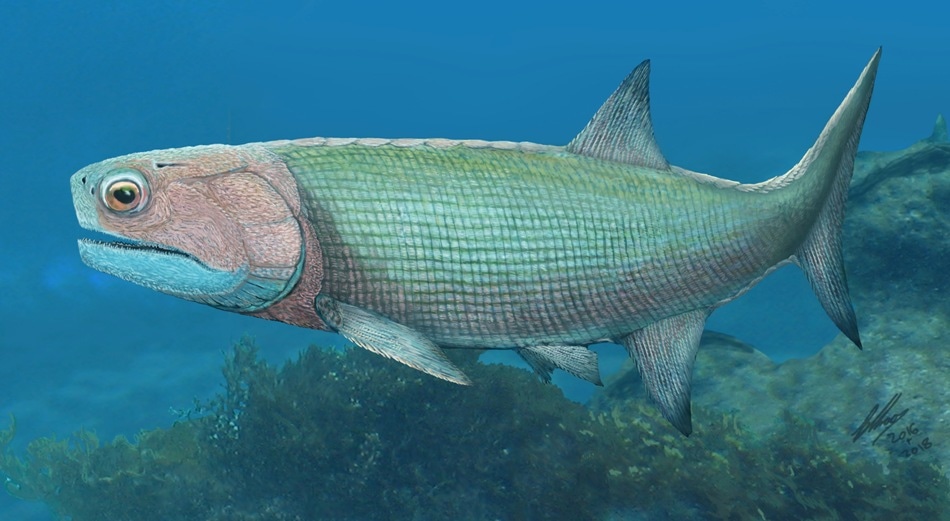Dec 19 2018
The discovery of a new fish at a famous WA fossil site is in such good condition that it provides an exciting fresh glimpse into the evolution of species from 380 million years ago.

The new fish - named Pickeringius acanthophorus (honouring the late Museums Victoria fossil collection manager David Pickering) - lived in the Late Devonian Period. Its beautifully preserved fossil skeleton was discovered by Flinders University’s Professor John Long at the Gogo Formation, in the Kimberleys of Western Australia. This has become a world famous fossil site, containing superb 3-dimensional preservations of entire fishes in limestone nodules, and has so far yielded more than 50 species.
Pickeringius, about the size of a sardine, was one of the earliest ray-finned fishes – a lineage that accounts for more than 98% of all living fish. There are about 30,000 ray-finned fish species alive today, but in the Devonian period, they were greatly outnumbered by other fish groups, with fewer than 30 species described worldwide.
The new find is especially significant because the braincase of this fish is exquisitely preserved. Devonian ray-finned fishes have mostly been found squashed flat, so the new discovery will enable CT scans of its skull at ANU, allowing palaeontologists to digitally render its endocast, and provide important information on early fish brain evolution. Only two previous Devonian ray-fins (Mimipiscis, from The Gogo Formation, and Raynerius, found in France) have had their brains subject to this level of detail.
The Pickeringius is distinctive for having enormous spiracular openings on the top of its head, though these present a mystery to palaeontologists. Most ray-finned fishes of this period had minute spiracles, and these are now vestigial or lost in most modern forms. The only living ray-finned fishes with well-developed spiracles are African bichirs, which use them to breathe air at the surface. Alternatively, modern rays (which are not ray-finned fishes) use their spiracles to breath while they are on the seabed (with their mouths and gills pressed under their body).
The fish is also excessively prickly, hence the name acanthophorus (which means spine bearer). The top of its skull is covered in little conical denticles. The underside of the pectoral girdle and the belly scales also covered in sharp denticles. Each of the fin-rays has rows of pointy barbs, giving the fins a serrated appearance. Even the bony spines leading to the tail fin (basal fulcra) have rows laterally projecting spikes, meaning that even its spikes have spikes.
The paper, A New Actinopterygian from the late Devonian Gogo Formation, Western Australia, by Dr Brian Choo, Jing Lu, Sam Giles, Kate Trinajstic and Professor John A Long, has been published by Papers in Palaeontology. (doi/epdf/10.1002) It can be read online here: https://onlinelibrary.wiley.com/doi/epdf/10.1002/spp2.1243?shared_access_token=A_FKIuAwpUE8FHttQsCxyk4keas67K9QMdWULTWMo8Paz3_Fs79HomKiypL_30Plhd0SCFxG3zFN4ceNKkbChkSPtLMIp5j2PywttSVRn1G51BwiVarAaHrbu1DIqAt_PK9f2_dm81wCWlYSsco6jg%3D%3D